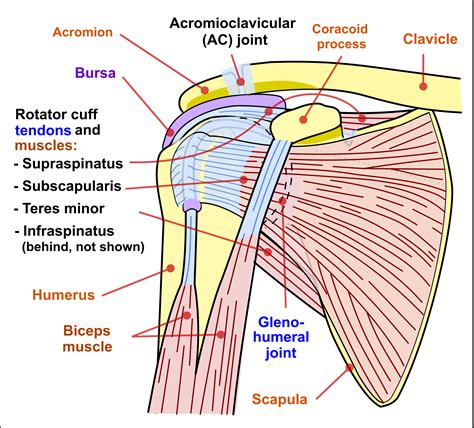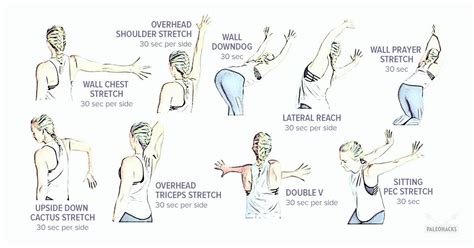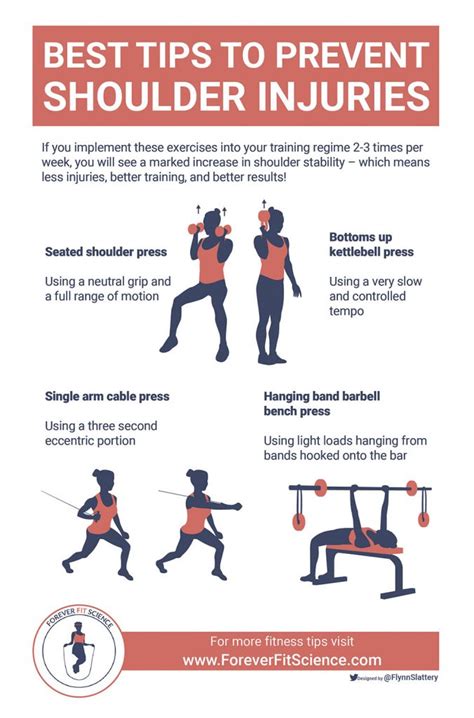The shoulder is one of the most mobile and complex joints in the human body, comprising multiple bones, muscles, and ligaments that work together to provide a wide range of motion. However, this complexity also makes the shoulder prone to various types of injuries and strains, particularly for individuals who engage in repetitive activities or sports that involve overhead movements. Regular stretching and exercise can help improve flexibility, reduce the risk of injury, and alleviate existing pain or discomfort in the shoulder area. In this article, we will delve into the importance of shoulder stretches, their benefits, and provide a comprehensive guide on how to perform the best shoulder stretches.
Shoulder stretches are essential for maintaining good posture, preventing injuries, and enhancing overall mobility. When the muscles in the shoulder area become tight or imbalanced, it can lead to poor posture, reduced range of motion, and increased risk of injury. Furthermore, individuals who work at desks or engage in activities that involve prolonged sitting or standing may experience shoulder tension and stiffness, which can be alleviated through regular stretching. By incorporating shoulder stretches into your daily routine, you can improve your overall well-being, enhance your athletic performance, and reduce the risk of developing chronic shoulder problems.
The benefits of shoulder stretches extend beyond improving flexibility and reducing the risk of injury. Regular stretching can also help alleviate existing pain or discomfort, improve posture, and enhance overall mobility. Additionally, shoulder stretches can help reduce stress and tension, promote relaxation, and improve sleep quality. Whether you are an athlete, a desk worker, or simply looking to improve your overall health and well-being, incorporating shoulder stretches into your daily routine can have a significant impact on your quality of life. In the following sections, we will explore the best shoulder stretches, their benefits, and provide a step-by-step guide on how to perform them.
Understanding Shoulder Anatomy
To effectively stretch the shoulder, it is essential to understand the underlying anatomy. The shoulder joint, also known as the glenohumeral joint, is a ball-and-socket joint that connects the humerus (upper arm bone) to the scapula (shoulder blade). The shoulder joint is surrounded by a group of muscles and ligaments that provide stability, support, and movement. The primary muscles involved in shoulder movement include the deltoids, rotator cuff muscles (supraspinatus, infraspinatus, teres minor, and subscapularis), and the trapezius. Understanding the anatomy of the shoulder can help you target specific areas and perform stretches that are tailored to your needs.
Best Shoulder Stretches
There are several shoulder stretches that can help improve flexibility, reduce tension, and alleviate pain or discomfort. Here are some of the best shoulder stretches:
* Chest stretch: Stand in a doorway with your hands on the doorframe at shoulder height. Lean forward until you feel a stretch in your chest and shoulders.
* Shoulder rolls: Roll your shoulders forward and backward in a circular motion. Repeat for 10-15 repetitions.
* Arm circles: Hold your arms straight out to the sides at shoulder height. Make small circles with your hands for 5-10 repetitions.
* Scapular squeeze: Sit or stand with your arms at your sides. Squeeze your shoulder blades together and hold for 5-10 seconds. Release and repeat for 10-15 repetitions.
* Cross-body stretch: Hold your arm straight out to the side at shoulder height. Use your other arm to pull your hand toward your shoulder blade until you feel a stretch in your shoulder and upper back.
Dynamic Shoulder Stretches
Dynamic shoulder stretches involve movement and can help improve flexibility, reduce stiffness, and enhance overall mobility. Here are some dynamic shoulder stretches:
* Arm waves: Hold your arms straight out to the sides at shoulder height. Wave your arms up and down for 10-15 repetitions.
* Shoulder rotations: Hold your arms straight out to the sides at shoulder height. Rotate your shoulders in a circular motion, first clockwise and then counterclockwise. Repeat for 5-10 repetitions.
* Wall slides: Stand with your feet shoulder-width apart and your hands on a wall at shoulder height. Slowly slide your hands up the wall, keeping your arms straight, and then return to the starting position. Repeat for 10-15 repetitions.
Benefits of Shoulder Stretches
The benefits of shoulder stretches are numerous and can have a significant impact on overall health and well-being. Here are some of the benefits of shoulder stretches:
* Improved flexibility: Regular stretching can help improve flexibility and range of motion in the shoulder joint.
* Reduced risk of injury: Shoulder stretches can help reduce the risk of injury by improving flexibility and reducing muscle imbalances.
* Alleviated pain and discomfort: Shoulder stretches can help alleviate existing pain or discomfort in the shoulder area.
* Improved posture: Shoulder stretches can help improve posture by reducing muscle tension and improving flexibility.
* Enhanced athletic performance: Shoulder stretches can help improve athletic performance by enhancing mobility, reducing stiffness, and improving overall flexibility.
Common Shoulder Injuries
Shoulder injuries are common, particularly among athletes and individuals who engage in repetitive activities or sports that involve overhead movements. Here are some common shoulder injuries:
* Rotator cuff strains: The rotator cuff is a group of muscles and tendons that surround the shoulder joint. Strains or tears in the rotator cuff can cause pain, weakness, and limited mobility.
* Shoulder impingement: Shoulder impingement occurs when the shoulder blade puts pressure on the underlying tissues, causing pain and limited mobility.
* Dislocations: Shoulder dislocations occur when the humerus (upper arm bone) is forced out of the shoulder socket. This can cause pain, weakness, and limited mobility.
* Tendinitis: Tendinitis is inflammation of the tendons, which can cause pain, stiffness, and limited mobility.
Preventing Shoulder Injuries
Preventing shoulder injuries requires a combination of proper technique, regular stretching, and strengthening exercises. Here are some tips for preventing shoulder injuries:
* Warm up before exercise or activity: Warming up before exercise or activity can help reduce the risk of injury by increasing blood flow and reducing muscle stiffness.
* Use proper technique: Using proper technique when engaging in sports or activities can help reduce the risk of injury by avoiding excessive stress on the shoulder joint.
* Stretch regularly: Regular stretching can help improve flexibility and reduce muscle imbalances, which can help reduce the risk of injury.
* Strengthen the shoulder muscles: Strengthening the shoulder muscles can help improve stability and support, which can help reduce the risk of injury.
Treatment Options for Shoulder Injuries
Treatment options for shoulder injuries depend on the severity and type of injury. Here are some common treatment options for shoulder injuries:
* Rest, ice, compression, and elevation (RICE): RICE is a common treatment for minor shoulder injuries, which involves resting the affected area, applying ice to reduce pain and inflammation, compressing the affected area to reduce swelling, and elevating the affected area to reduce swelling.
* Physical therapy: Physical therapy can help improve mobility, strength, and flexibility, which can help reduce pain and improve function.
* Medication: Medication, such as pain relievers and anti-inflammatory medications, can help reduce pain and inflammation.
* Surgery: In some cases, surgery may be necessary to repair or reconstruct damaged tissues, such as torn tendons or ligaments.
What are the most common causes of shoulder pain?
+
Shoulder pain can be caused by a variety of factors, including muscle strains, tendonitis, bursitis, and rotator cuff injuries.
How can I prevent shoulder injuries?
+
Preventing shoulder injuries requires a combination of proper technique, regular stretching, and strengthening exercises. Warming up before exercise or activity, using proper technique, and stretching regularly can help reduce the risk of injury.
What are the benefits of shoulder stretches?
+
The benefits of shoulder stretches include improved flexibility, reduced risk of injury, alleviated pain and discomfort, improved posture, and enhanced athletic performance.
In conclusion, shoulder stretches are an essential part of maintaining good health and well-being. By incorporating shoulder stretches into your daily routine, you can improve flexibility, reduce the risk of injury, and alleviate existing pain or discomfort. Remember to always listen to your body and consult with a healthcare professional if you experience any pain or discomfort. We hope this article has provided you with valuable information and insights on the best shoulder stretches. If you have any questions or comments, please don't hesitate to share them below. Additionally, if you found this article helpful, please share it with your friends and family to help them improve their shoulder health and well-being.







